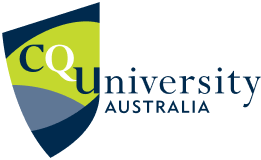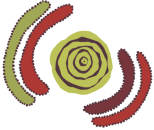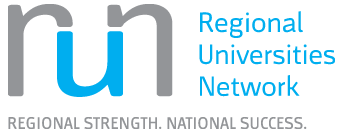Transition to Community Control - Gurriny Project
Yarrabah, home to the Gunggandji people, is the largest Aboriginal community in Australia and was also ranked Australia's most disadvantaged local government area in 2011, based on the Socio-Economic Indexes for Areas (SEIFA). With the aim of improving health care delivery and access, the management and accountability for primary health care (PHC) services in Yarrabah was transferred from Cairns and Hinterland Hospital and Health Service (CHHHS) to community control through Gurriny Yealamucka Health Service Aboriginal Corporation (Gurriny) on 1 July 2014. Gurriny focuses on long-term generational change through early intervention, using a family-centred holistic model of care and education.
Despite there being a long history of Aboriginal community-controlled PHC services operating in Australia since the beginning of the 1970's, this was the first time that control of a Queensland state-run Aboriginal PHC service was handed over to the local community. This transition is therefore a significant movement in the history of Aboriginal community-controlled health in Australia. Yarrabah's successful transition of their PHC services to community control was an outcome of over a decade's work by the Yarrabah community, Gurriny and government and other partners and stakeholders. Queensland Health expressed wanting to learn from Gurriny's experience to inform future and current planned transitions of government health services to community control. Queensland Health, therefore, commissioned the Centre for Indigenous Health Equity Research (CIHER) at Central Queensland University to complete a retrospective evaluation of the process of transitioning to a community-controlled PHC in Yarrabah.
The review of this transition will build on earlier work to identify the enablers and barriers for implementing the community-controlled service model of care and education implemented by Gurriny since 2014; the components/strategies of the model of care; and its healthcare and health outcomes. Also identified will be recommendations for further health service quality improvement and further routine collection of indicators to enable prioritisation of work to progress health outcomes.
The evaluation approach taken by CIHER to understand Gurriny's experience of transitioning to community control involves several components:
- A scoping review of peer-reviewed literature to identify the conditions, strategies and enabling factors that contributed to the establishment and development of the Australian ACCHS sector, as well as the barriers faced and outcomes achieved;
- A process evaluation to assess the transition processes and experiences through grounded theory analysis of transition documents and interviews with key staff and stakeholders. This analysis aims to identify: the performance and patterns of change in the provision of Gurriny health service strategies over time; barriers and enablers to implementation; key health service strengths and issues/ concerns; how health outputs and outcomes have been achieved; and provide suggestions for further strategies and implementation enablers;
- An outcome evaluation to assess benefits to clients with respect to prevention, detection and successful management of acute and chronic conditions and the reduction of risk factors. available data for changes in health and wellbeing risks, social and emotional well-being and health outcomes since transition will be analysed, and where possible, compare against national and regional benchmarks. The societal benefits to Yarrabah in terms of increased employment will also be analysed;
- An economic evaluation of whether the economic benefits of the transition outweigh its costs, and whether the strategy (the new model of care) is cost-effective. Potentially preventable hospitalisation are to be adopted as one of the indicators of the accessibility and overall effectiveness of the service.
Since primary healthcare services in Yarrabah transitioned to community control in 2014, Gurriny has achieved whopping performance improvements. For 72% national key performance indicators, performance improved over time AND > national rate; for a further 14%, they improved but still performing at < national rate. Project report is featured on page 6 of Gurriny News and CIHER Twitter.
The results of the evaluation will be provided to the key stakeholders and published in relevant peer-reviewed journals. For more information please contact CIHER.
Academic Publications
Research Outputs
Peer-Reviewed Publications:
- Campbell, S., Jongen, C., Fagan, R., Pearson, K., Bainbridge, R., McCalman, J. (submitted). Primary health care transitions to Indigenous community control in Australia, New Zealand, Canada and the United States: A systematic literature review. BMC Health Services Research.
- Crystal Jongen; Sandra Campbell; Janya McCalman; Ruth Fagan; Kingsley Pearson; Suzanne Andrews. (submitted). Transitioning to Aboriginal community control of primary health care: The process and strategies of one community-controlled health organisation in Queensland. BMC Family Practice.
- Jongen, C., McCalman, J., Campbell, S., Fagan, R. Working Well: Strategies to Strengthen the Workforce of the Indigenous Primary Healthcare Sector. BMC Health Services Research 19, 910 (2019). https://doi.org.10.1186/s12913-019-4750-5.
- McCalman, J., Campbell, S., Jongen, C., Langham, E., Pearson, K., Fagan, R., Martin-Sardesai, A., Bainbridge, R. (2019). Working Well: A systematic scoping review of the Indigenous primary healthcare workforce development literature. BMC Health Services Research 19, 767. https://doi.org?10.1186/s12913-019-4580-5.
Reports:
- Campbell, S., Jongen, C., Kinchin, I., Doran, C., McCalman, J. (2019). Transition of primary healthcare services in Yarrabah to community control Project Report for Gurriny Yealamucka Health Service and Queensland Health. Prepared by the Centre for Indigenous Health Equity Research, Central Queensland University.
- Campbell, S., Jongen, C., Fagan, R., Bainbridge, R., McCalman, J. (2019). Working Well: Tailoring a workforce development model to deliver sustained improvements in community-controlled health care. Project Report for Gurriny Yealamucka Health Service prepared by the Centre for Indigenous Health Equity Research, Central Queensland University.


